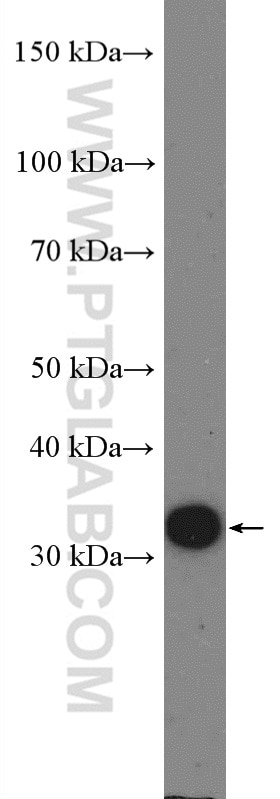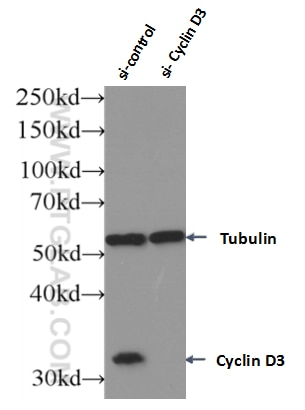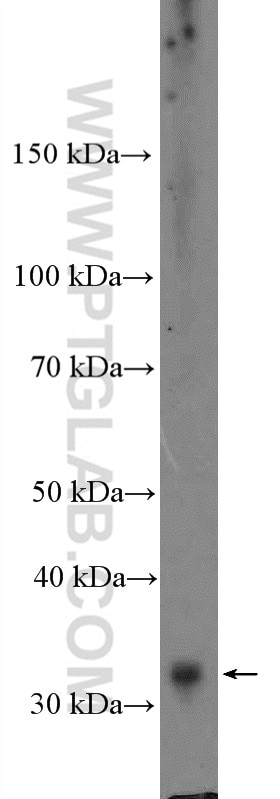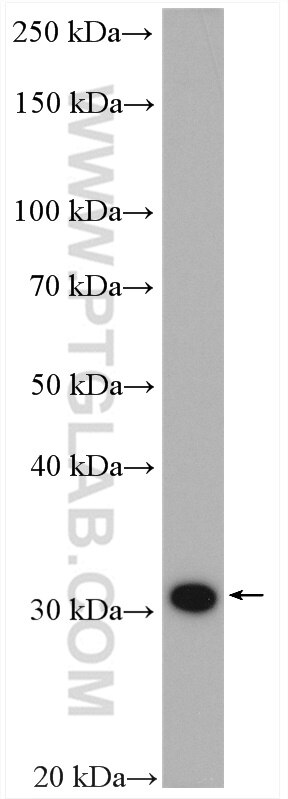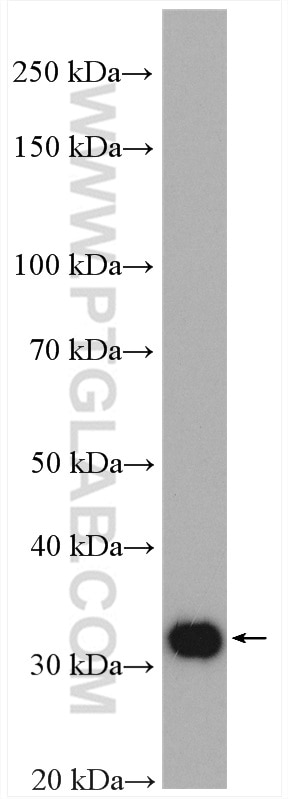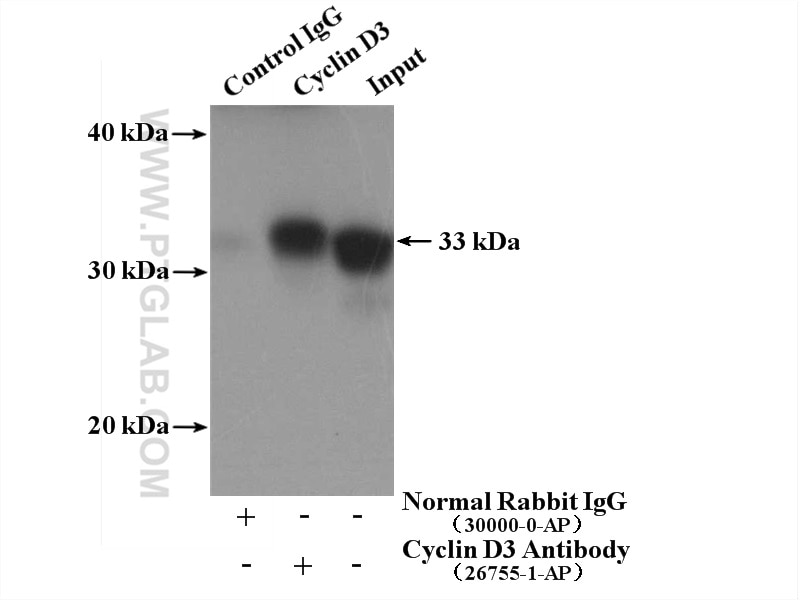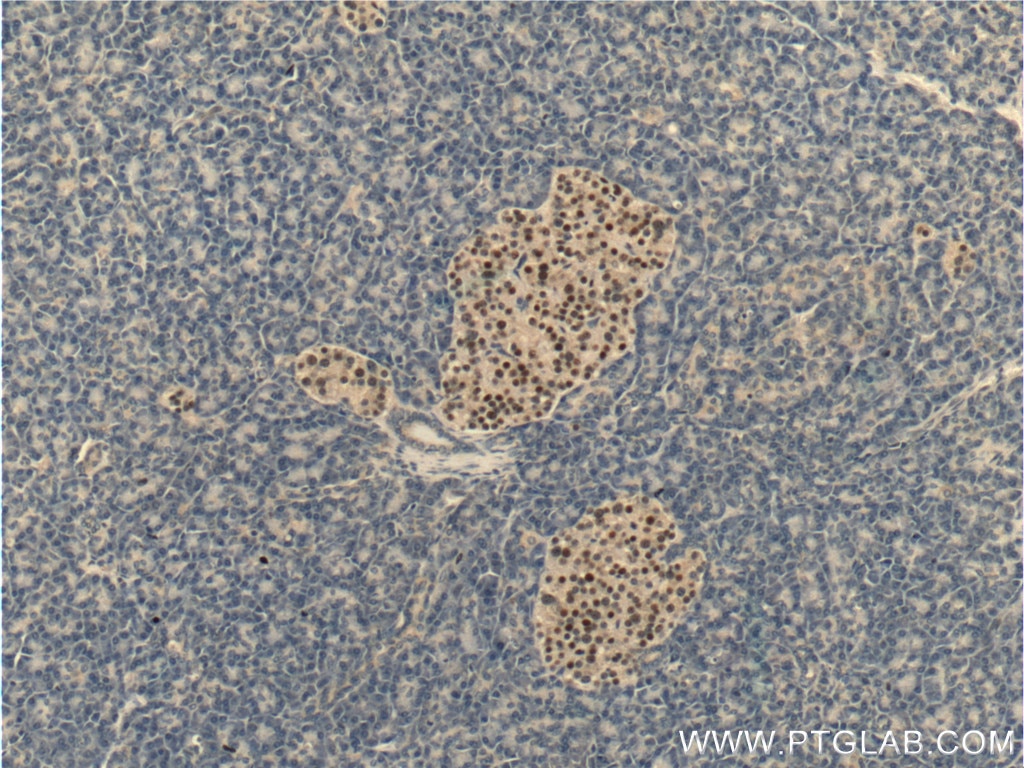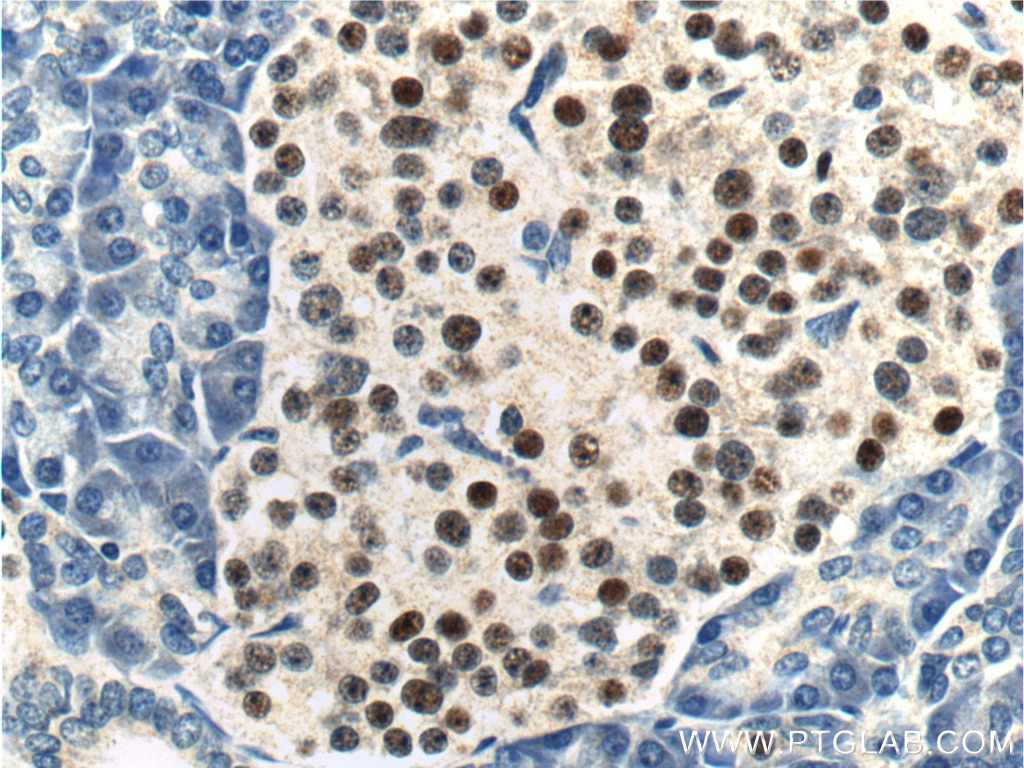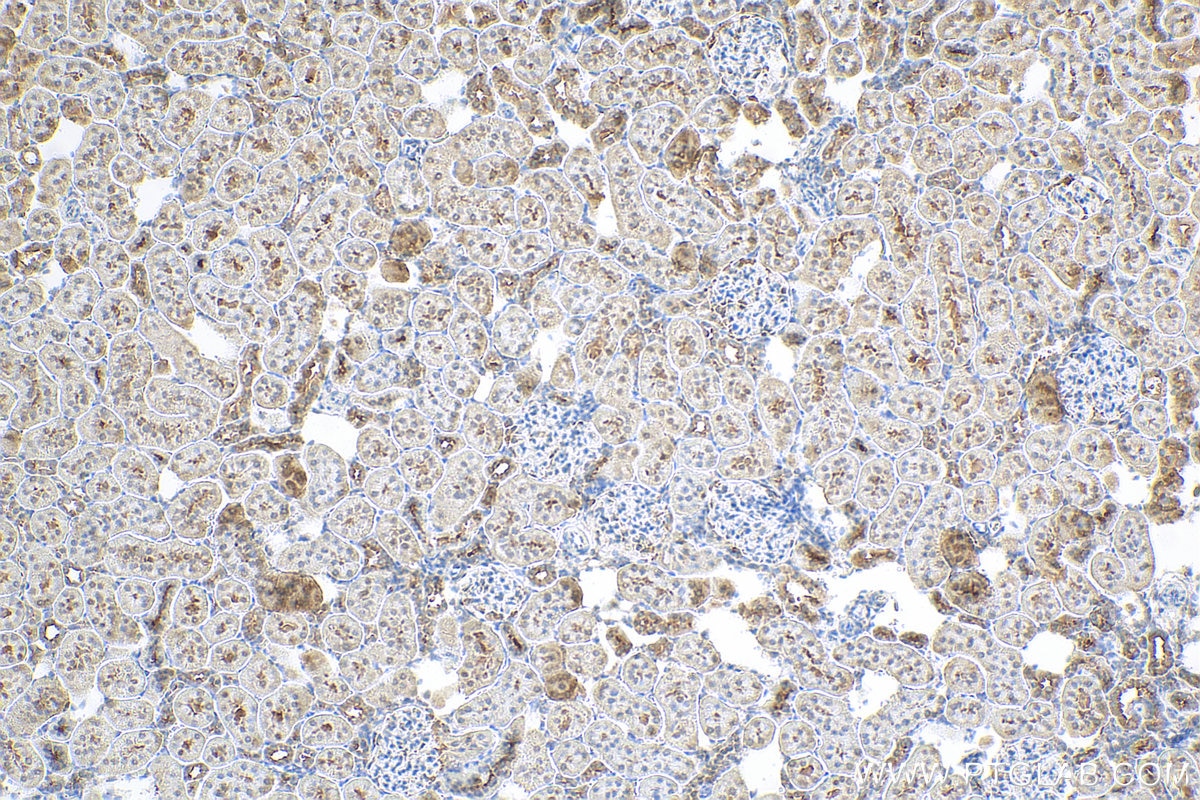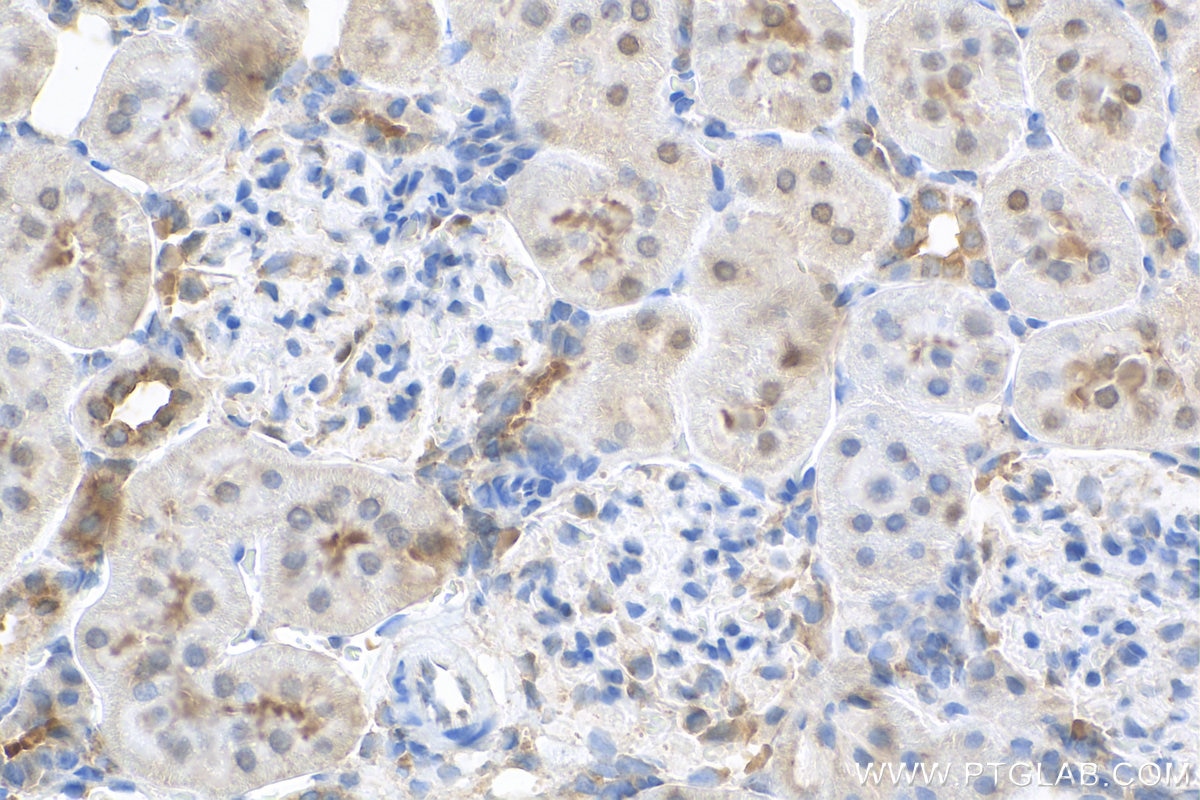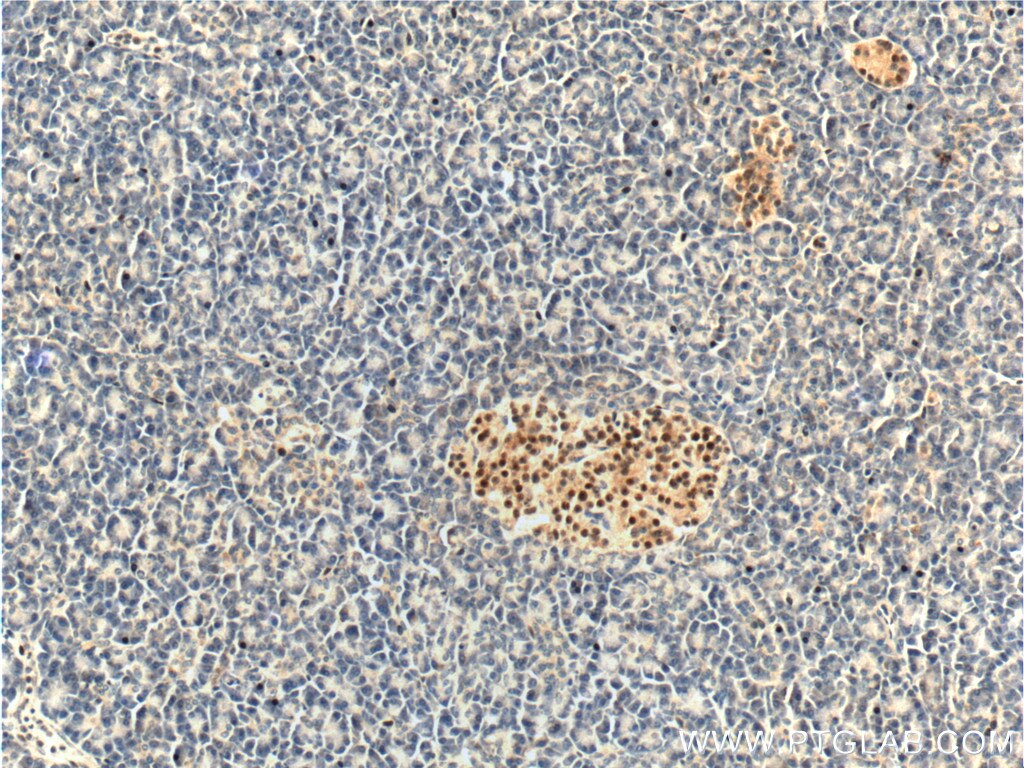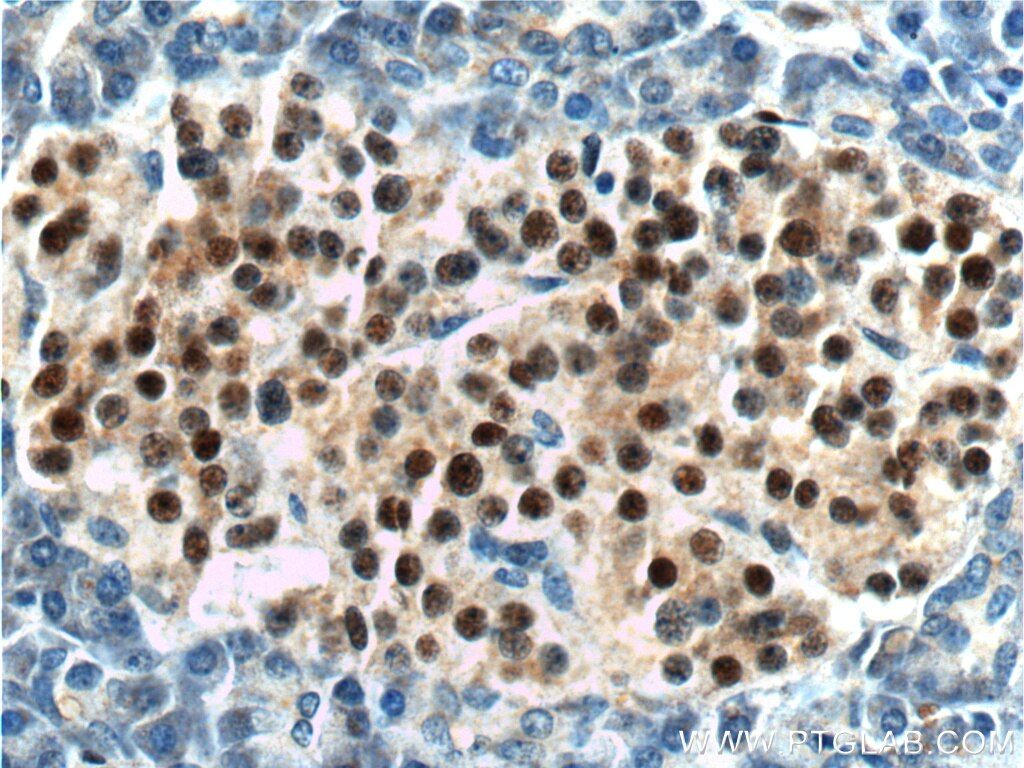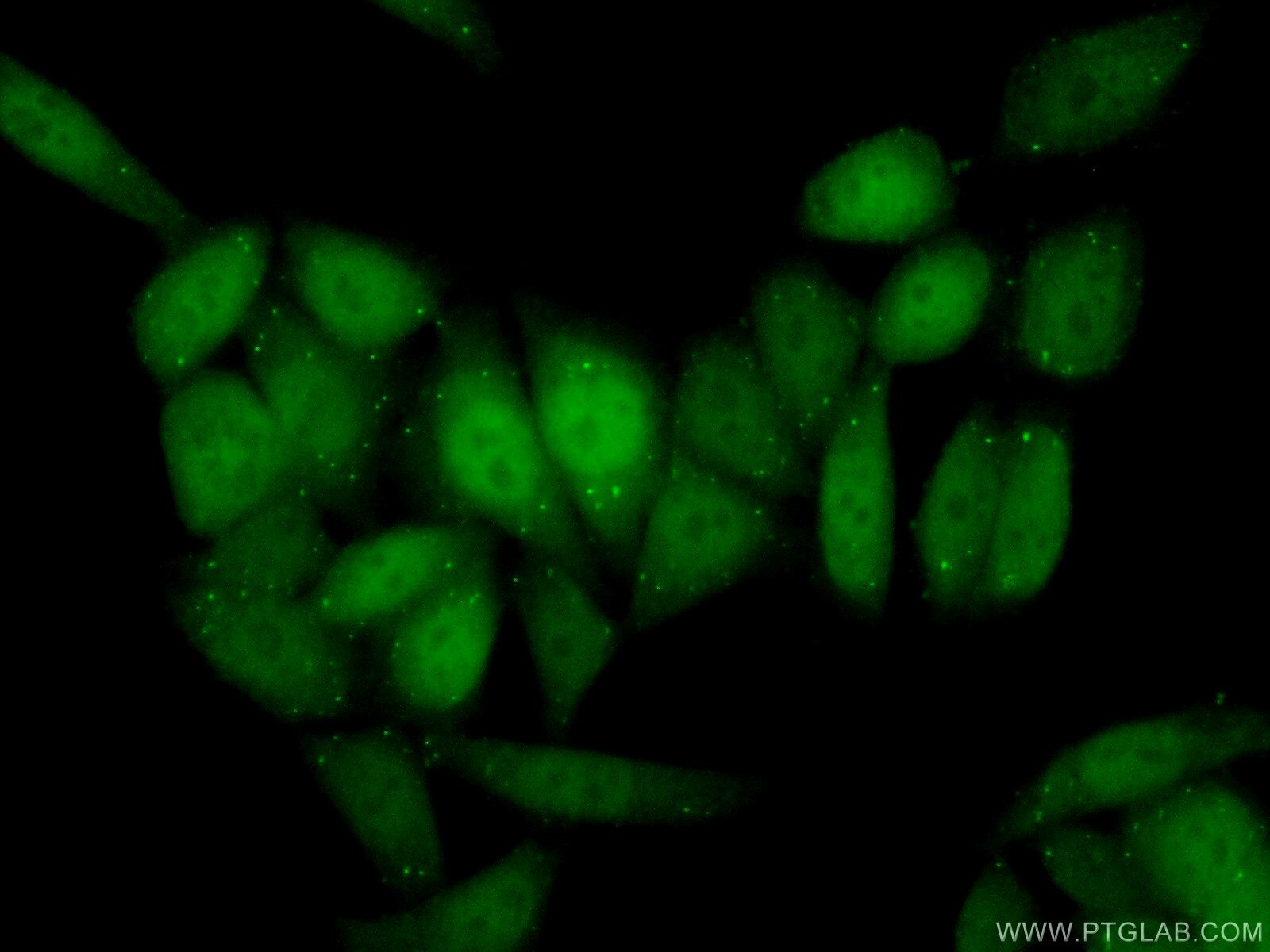- Featured Product
- KD/KO Validated
Cyclin D3 Polyklonaler Antikörper
Cyclin D3 Polyklonal Antikörper für WB, IHC, IF/ICC, IP, ELISA
Wirt / Isotyp
Kaninchen / IgG
Getestete Reaktivität
human, Ratte und mehr (1)
Anwendung
WB, IHC, IF/ICC, IP, ELISA
Konjugation
Unkonjugiert
Kat-Nr. : 26755-1-AP
Synonyme
Geprüfte Anwendungen
| Erfolgreiche Detektion in WB | C6-Zellen, HeLa-Zellen, Jurkat-Zellen, K-562-Zellen |
| Erfolgreiche IP | K-562-Zellen |
| Erfolgreiche Detektion in IHC | humanes Pankreasgewebe, Rattennierengewebe Hinweis: Antigendemaskierung mit TE-Puffer pH 9,0 empfohlen. (*) Wahlweise kann die Antigendemaskierung auch mit Citratpuffer pH 6,0 erfolgen. |
| Erfolgreiche Detektion in IF/ICC | HeLa-Zellen |
Empfohlene Verdünnung
| Anwendung | Verdünnung |
|---|---|
| Western Blot (WB) | WB : 1:500-1:2000 |
| Immunpräzipitation (IP) | IP : 0.5-4.0 ug for 1.0-3.0 mg of total protein lysate |
| Immunhistochemie (IHC) | IHC : 1:50-1:500 |
| Immunfluoreszenz (IF)/ICC | IF/ICC : 1:50-1:500 |
| It is recommended that this reagent should be titrated in each testing system to obtain optimal results. | |
| Sample-dependent, check data in validation data gallery | |
Veröffentlichte Anwendungen
| KD/KO | See 1 publications below |
| WB | See 39 publications below |
| IHC | See 4 publications below |
| IP | See 1 publications below |
Produktinformation
26755-1-AP bindet in WB, IHC, IF/ICC, IP, ELISA Cyclin D3 und zeigt Reaktivität mit human, Ratten
| Getestete Reaktivität | human, Ratte |
| In Publikationen genannte Reaktivität | human, Maus, Ratte |
| Wirt / Isotyp | Kaninchen / IgG |
| Klonalität | Polyklonal |
| Typ | Antikörper |
| Immunogen | Cyclin D3 fusion protein Ag25151 |
| Vollständiger Name | cyclin D3 |
| Berechnetes Molekulargewicht | 33 kDa |
| Beobachtetes Molekulargewicht | 33 kDa |
| GenBank-Zugangsnummer | BC011616 |
| Gene symbol | Cyclin D3 |
| Gene ID (NCBI) | 896 |
| Konjugation | Unkonjugiert |
| Form | Liquid |
| Reinigungsmethode | Antigen-Affinitätsreinigung |
| Lagerungspuffer | PBS with 0.02% sodium azide and 50% glycerol |
| Lagerungsbedingungen | Bei -20°C lagern. Nach dem Versand ein Jahr lang stabil Aliquotieren ist bei -20oC Lagerung nicht notwendig. 20ul Größen enthalten 0,1% BSA. |
Hintergrundinformationen
Cyclin D3 belongs to the highly conserved cyclin family, whose members are characterized by a dramatic periodicity in protein abundance through the cell cycle. Cyclins function as regulators of CDK kinases. Different cyclins exhibit distinct expression and degradation patterns which contribute to the temporal coordination of each mitotic event. This cyclin forms a complex with and functions as a regulatory subunit of CDK4 or CDK6, whose activtiy is required for cell cycle G1/S transition. This protein has been shown to interact with and be involved in the phosphorylation of tumor suppressor protein Rb. The CDK4 activity associated with this cyclin was reported to be necessary for cell cycle progression through G2 phase into mitosis after UV radiation.
Protokolle
| PRODUKTSPEZIFISCHE PROTOKOLLE | |
|---|---|
| WB protocol for Cyclin D3 antibody 26755-1-AP | Protokoll herunterladen |
| IHC protocol for Cyclin D3 antibody 26755-1-AP | Protokoll herunterladenl |
| IF protocol for Cyclin D3 antibody 26755-1-AP | Protokoll herunterladen |
| IP protocol for Cyclin D3 antibody 26755-1-AP | Protokoll herunterladen |
| STANDARD-PROTOKOLLE | |
|---|---|
| Klicken Sie hier, um unsere Standardprotokolle anzuzeigen |
Publikationen
| Species | Application | Title |
|---|---|---|
Cell Death Dis ZNF652 exerts a tumor suppressor role in lung cancer by transcriptionally downregulating cyclin D3 | ||
Acta Pharmacol Sin Inhibition of USP10 induces myeloma cell apoptosis by promoting cyclin D3 degradation
| ||
J Ethnopharmacol The mechanism of Chebulae Fructus Immaturus promote diabetic wound healing based on network pharmacology and experimental verification | ||
J Proteome Res Identification of a Proteomic Signature of Senescence in Primary Human Mammary Epithelial Cells | ||
Transl Lung Cancer Res Deubiquitinase USP5 promotes non-small cell lung cancer cell proliferation by stabilizing cyclin D1. | ||
Cancer Gene Ther Targeting LRIG2 overcomes resistance to EGFR inhibitor in glioblastoma by modulating GAS6/AXL/SRC signaling. |
